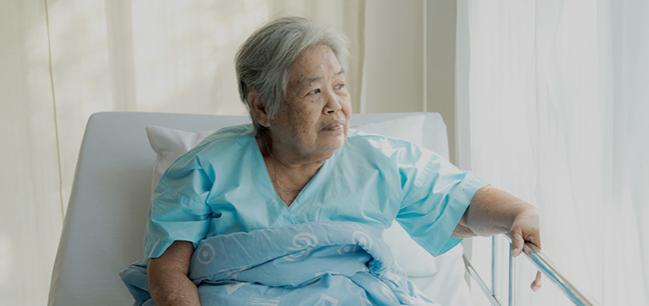PCI on the Rise Among the Elderly, Who Are Reaping Survival Gains
“We shouldn’t age discriminate,” an expert agreed, but he cautioned against reading too much into the unadjusted outcomes data.

Even patients ages 85 to 89 years derive a survival benefit from PCI after an acute MI, new observational data show. And clinicians appear to be growing more aware of that benefit—PCI use jumped by an absolute 15% in this subgroup between 2000 and 2016.
Patients in their late 70s and early 80s also saw this growth, as well as better survival, though the differences were less sharp, Abdulla A. Damluji, MD, MPH (Johns Hopkins University , Baltimore, MD), and colleagues report in a research letter published online today in Circulation: Cardiovascular Interventions.
The findings come on the heels of another study, with Damluji as lead author, which showed similar trends in elderly patients with acute MI complicated by cardiogenic shock.
“As the population ages, operators are faced with more complex coronary disease anatomy and the decision whether to perform high-risk PCI will become increasingly relevant to daily practice,” the researchers say.
Commenting on the latest data for TCTMD, Ajay Kirtane, MD (NewYork-Presbyterian/Columbia University Irving Medical Center, New York, NY), said the increasing rates of PCI across the elderly groups are the most interesting aspect. “There used to be perhaps more reluctance to treat higher-risk patients but because it’s gotten safer and also there are definitely many spry octogenarians, we shouldn’t deprive patients of [PCI’s] benefits if they meet clinical indications,” he said.
For him, less certain is what to make of the observed reductions in mortality, which came from unadjusted analyses.
“Remember, along the same time period, troponin assays [have become] more sensitive,” Kirtane pointed out. “So what is actually called a myocardial infarction has changed, in the sense that early in the time period they may have been bigger heart attacks and later in the time period they may have been smaller heart attacks.” Survival as a whole has improved over the years for MI patients, he noted, adding, “To what extent it’s attributable to PCI can’t be answered from this type of analysis.”
These data emphasize that we shouldn’t age discriminate and that we’re not necessarily age discriminating. Ajay Kirtane
The researchers used the Premier Healthcare Database to identify 469,827 patients who had their first acute MI at age 75 or older between January 2000 and January 2016. They then split these patients into three groups: 75 to 79 years (34% of the cohort), 80 to 84 years (30%), and 85 to 89 years (36%), dubbed young-old, middle-old, and old-old.
As would be expected, overall the old-old group had the highest burden of comorbidities. Most prevalent were heart failure, valvular disease, stroke, and pulmonary circulation disorders. In-hospital mortality was 13% among the eldest patients, compared with 8% in the young-old group and 10% in the middle-old group (P< 0.001).
Over time, there were decreases in unadjusted mortality seen in tandem with increases in PCI use. By 2016, the in-hospital mortality rate was 5% and 7% for the young-old and middle-old groups, respectively.
The shifts between 2000 and 2016 were particularly sharp in the old-old group, however—PCI use rose from 10% to 25% while unadjusted mortality dropped from 17% to 11%.
PCI was associated with better survival in each category, but the absolute risk reduction was highest in the old-old group at 54 per 1,000 cases. In the young- and middle-old groups, there were 49 and 53 lives saved per 1,000 cases, respectively. This benefit also was evident in a multivariable model.
When treating elderly patients, clinical decision-making remains key, and it’s important to be judicious in terms of who should go to the cath lab, Kirtane stressed. That said, these individuals often have more advanced, complex disease in which PCI will have particular benefit. “And so, as long as the procedure can be done safely, those patients may have the most to gain,” he observed.
“What’s important, though, is these data emphasize that we shouldn’t age discriminate and that we’re not necessarily age discriminating,” Kirtane said.
Going forward, Damluji et al conclude, research is “needed to find ways to improve risk stratification and futility of care at older ages.”
Caitlin E. Cox is News Editor of TCTMD and Associate Director, Editorial Content at the Cardiovascular Research Foundation. She produces the…
Read Full BioSources
Damluji AA, Resar JR, Gerstenblith G, et al. Temporal trends of percutaneous coronary interventions in older adults with acute myocardial infarction: an increasing rate of utilization in very old adults. Circ Cardiovasc Interv. 2019;12:e007812.
Disclosures
- Damluji reports receiving research funding from The Johns Hopkins University Claude D. Pepper Older Americans Independence Center Funded by the National Institute on Aging.
- The current study was funded in part by a research grant from the Jane and Stanley F. Rodbell family in support of geriatric cardiology research at Sinai Hospital of Baltimore.
- Kirtane reports receiving institutional grants to Columbia University and/or the Cardiovascular Research Foundation from Medtronic, Boston Scientific, Abbott Vascular, Abiomed, CSI, CathWorks, Siemens, Philips, and ReCor Medical.


Comments